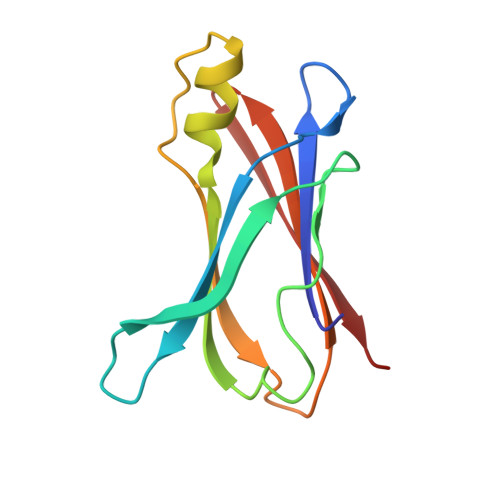Tolcapone, a potent aggregation inhibitor for the treatment of familial leptomeningeal amyloidosis.
Pinheiro, F., Varejao, N., Esperante, S., Santos, J., Velazquez-Campoy, A., Reverter, D., Pallares, I., Ventura, S.(2021) FEBS J 288: 310-324
- PubMed: 32324953
- DOI: https://doi.org/10.1111/febs.15339
- Primary Citation of Related Structures:
6TXV, 6TXW, 6XTK - PubMed Abstract:
Hereditary transthyretin amyloidosis (ATTR) is a disease characterized by the extracellular deposition of transthyretin (TTR) amyloid fibrils. Highly destabilizing TTR mutations cause leptomeningeal amyloidosis, a rare, but fatal, disorder in which TTR aggregates in the brain. The disease remains intractable, since liver transplantation, the reference therapy for systemic ATTR, does not stop mutant TTR production in the brain. In addition, despite current pharmacological strategies have shown to be effective against in vivo TTR aggregation by stabilizing the tetramer native structure and precluding its dissociation, they display low brain permeability. Recently, we have repurposed tolcapone as a molecule to treat systemic ATTR. Crystal structures and biophysical analysis converge to demonstrate that tolcapone binds with high affinity and specificity to three unstable leptomeningeal TTR variants, stabilizing them and, consequently, inhibiting their aggregation. Because tolcapone is an FDA-approved drug that crosses the blood-brain barrier, our results suggest that it can translate into a first disease-modifying therapy for leptomeningeal amyloidosis. DATABASES: PDB codes for A25T-TTR, V30G-TTR, and Y114C-TTR bound to tolcapone are 6TXV, 6TXW, and 6XTK, respectively.
- Departament de Bioquímica i Biologia Molecular, Institut de Biotecnologia i Biomedicina, Universitat Autònoma de Barcelona, Spain.
Organizational Affiliation:

















